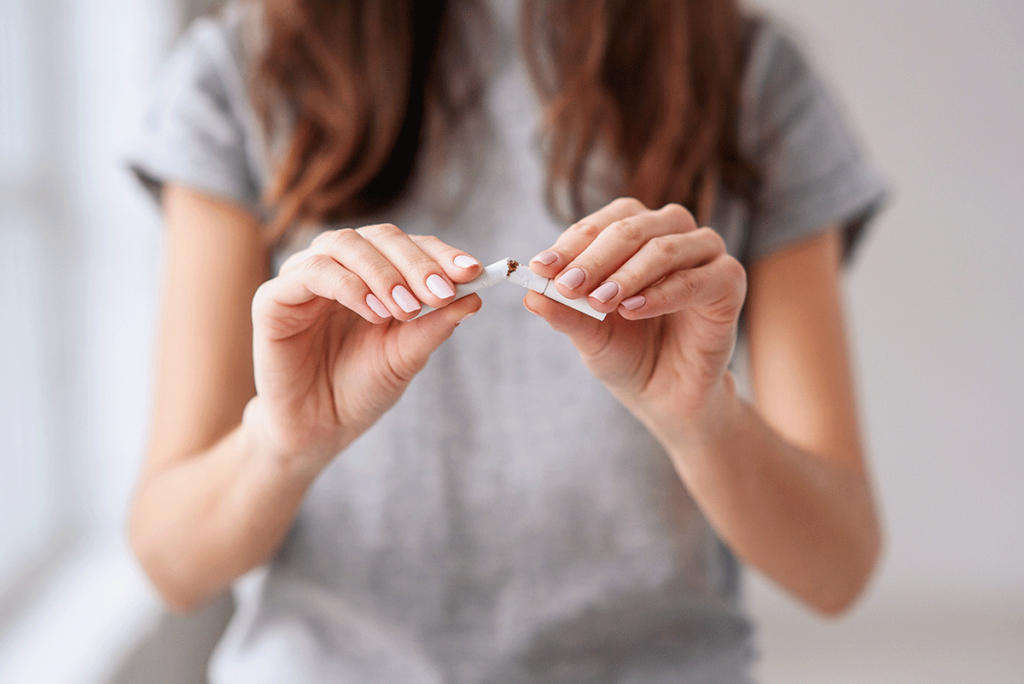Tobacco smoking is still the most preventable cause of death in the United States and the world. So what works best for you to quit smoking? Call 888.296.8976 to speak with someone from Northpoint Recovery’s experienced team of professionals about the most effective aids to stop smoking and our substance abuse treatment programs in Idaho.
How Do You Quit Smoking?
Behavior Modification Techniques to Quit Smoking
The first few hours after you quit smoking might seem too easy, but about four hours in come the cravings, followed by intense withdrawal symptoms. These withdrawal symptoms peak in three days and improve within 10 days. On the other hand, the cravings may persist for a lifetime.
When you prepare to quit smoking, list all the situations and activities that trigger your cravings. Then, develop strategies to beat the urge. When an urge arises:
- Remove yourself from or avoid problems that make you want to smoke
- Minimize spending time with smokers
- Distract yourself for five to 10 minutes
- Take deep breaths
- Drink water instead of munching on food to avoid weight gain
- Go for a walk
Remember never to consider taking “just one puff” because you know it will never end at just one.
Nicotine Replacement Therapy
Nicotine replacement therapy (NRT) is designed to ease the intensity of withdrawal symptoms you will experience when you try to stop smoking.
Nicotine Patch
Nicotine patches deliver a steady stream of nicotine over 16 to 24 hours. The nicotine content of patches is lower than that of cigarettes but enough to reduce symptoms.
Nicotine Gum
Nicotine gum is also perfect as a first choice for NRT, although it is only recommended for those who have relapsed after using the patch. This is because nicotine gums are more expensive and relatively harder to use.
Nicotine Lozenge
Like gums, nicotine lozenges release nicotine into the saliva over hours. The difference is that lozenges deliver more nicotine than the gum. Lozenges may be better for some people to use because they do not need to be chewed on.
Nicotine Nasal Spray
Compared to the patch, gum, and lozenge, the nicotine nasal spray rapidly increases nicotine levels, closely mimicking the surge of nicotine you get from smoking. This is perfect for easing sudden cravings. A disadvantage is that the nasal spray is the most addictive form of NRT.
Bupropion
First created to treat depression, bupropion was approved by the U.S. Food and Drug Administration (FDA) as the first drug of choice for smoking cessation. Bupropion appears to change how the brain responds to nicotine, causing smoking to be less pleasurable. Balancing the chemicals in your brain, bupropion reduces craving and withdrawal symptoms.
Nortriptyline
Nortriptyline is a tricyclic antidepressant. Although it is a second-choice drug for smoking cessation, nortriptyline is not FDA-approved. By influencing the hormones in the brain, nortriptyline reduces the rewarding and pleasurable effects of smoking. In effect, it also mitigates the depression that comes along with quitting smoking.
Varenicline
Varenicline triggers the release of dopamine, which controls the brain’s reward and pleasure system in the same way nicotine works. When you quit smoking, you could experience depression and anxiety until your natural dopamine production is restored. Varenicline counteracts the effects of low dopamine levels and reduces some nicotine withdrawal symptoms.
Counseling
If you want to quit smoking, you can meet with a counselor or therapist alone or in a group setting or talk over the phone. The counselor can help:
- Establish a date to quit smoking
- Motivate to keep going
- Explore strategies to beat cravings
- Recognize trigger situations, including feelings, events, and activities
- Tobacco-proof your home
- Stay informed about the latest developments in nicotine addiction research
- Build social support
Some quit programs, clinics, and hospitals in your area offer face-to-face counseling. While you can get some for free or a small amount, Medicare will cover up to eight counseling sessions annually.
Find the Best Way to Quit Smoking for You with Northpoint Recovery
The most effective aid to stop smoking is what works for you. Medications, therapeutic approaches, and behavior modification techniques to quit smoking can be adjusted to suit your needs. Contact Northpoint Recovery today at 888.296.8976 to learn more.

